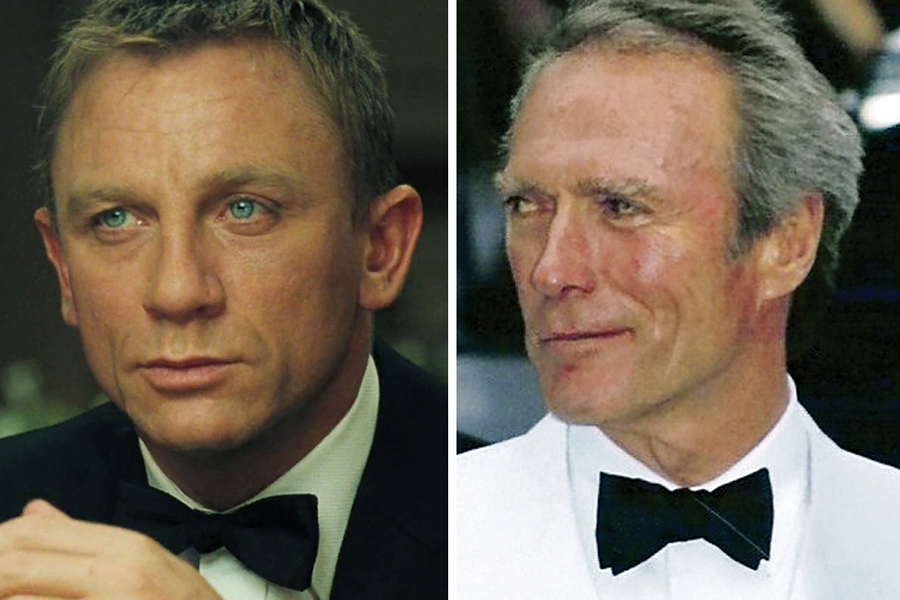
“I’ve not come across anybody with one unattached lobe and one attached lobe, but of course it’s hard to check without attracting attention and seeming a bit weird,” writes “Whimsy” columnist CLIVE WILLIAMS.
I WAS going to write about ears and hearing but found it too large a topic to encompass in one short article, so thought I’d just focus on earlobes instead.

The human earlobe (lobulus auriculae) is composed of soft tissue, unlike the rest of the ear which is made up of cartilage. Earlobes average about two centimetres long and tend to elongate with age. Some people have unattached hanging lobes while others have them attached to the sides of their face.
I’ve not come across anybody with one unattached lobe and one attached lobe, but of course it’s hard to check without attracting attention and seeming a bit weird.
Does the earlobe have a function?
Earlobes are not considered to have any significant biological function, but since the earlobe has a large blood supply and no cartilage, it may help warm the ears and maintain balance. Further, the earlobe does contain many nerve endings and so for some people it’s an erogenous zone.
In early studies, earlobe creases were thought to be associated with increased risk of heart attack and coronary heart disease. The diagonal earlobe crease is called “Frank’s Sign”. Not for Frank Sinatra but for Dr Sanders T Frank who noted that 20 patients with angina (chest pain caused by reduced blood flow to the heart) had creases. More recent studies have concluded that ageing is more likely to account for the positive correlation between Frank’s Sign and heart attacks.
Piercing the earlobes is commonplace in many cultures. No other location on the body is as commonly pierced. Injury to the earlobe due to the weight of heavy earrings is common. Some cultures practise earlobe stretching for a decorative effect.
Wearing earrings (and piercings) permanently can be bad for one’s health. Some research has found that the most frequent complications associated with wearing earrings are inflammation, keloids (itchy scars), and loss of tissue by tearing.
Polish researchers have also found a relationship between ear jewellery and allergies. The reason seems to be the nickel commonly used in jewellery production. Nickel leaches from the earrings into the human body and can cause eczema and other health issues. The specific reason is the contact of nickel ions with the earring wearer’s lymphatic system.
An affected person may then react allergically to dental braces, meals cooked in nickel pots, margarine (nickel is a catalyst in hydrogenation of unsaturated fats), coins, chocolate, nuts, leguminous vegetables, wine, and beer. The study noted that allergic symptoms do not stop if the infected person stops wearing earrings.
Jewellery allergy does not occur with pure gold earrings, but it can occur with gold-plated earrings because they’re likely to contain nickel.
There’s a common belief that a single gene controls the trait of unattached versus attached earlobes, with unattached earlobes being dominant – meaning that a parent with unattached earlobes could not have a child with attached earlobes. However, it would be unwise to base divorce proceedings on that ground because there are many other factors that can influence lobe types.
To conclude with a couple of earlobe anecdotes:
A man goes to a doctor and says his earlobes are affecting his hearing. The doctor says: “That’s odd – can you describe the symptoms?”
The man says: “Of course. Marge has blue hair and Homer’s fat and bald”.
The Pope is performing miracles on children in a lawless part of Liverpool during a pastoral visit.
Billy approaches the Pope and says: “Father, could you help me with my hearing?”
The Pope says: “Of course, my son”. He cups his hands over Billy’s ears (and lobes) and prays quietly, and then asks: “How is your hearing now, my son?”
“I don’t know,” says Billy “it’s not until next Wednesday.”
Clive Williams is a Canberra columnist
Who can be trusted?
In a world of spin and confusion, there’s never been a more important time to support independent journalism in Canberra.
If you trust our work online and want to enforce the power of independent voices, I invite you to make a small contribution.
Every dollar of support is invested back into our journalism to help keep citynews.com.au strong and free.
Thank you,
Ian Meikle, editor





![For graphic designer Tracy Hall, street art is like any artwork, her canvas has been swapped out for fences and plywood, her medium changing from watercolours to spray paint.
A Canberra resident for 13 years, Tracy has been a street and mural artist for the past five.
Her first exploration into grand-scale painting was at the Point Hut toilets in Banks five years ago. “They had just finished doing up the playground area for all the little kids and the words [of graffiti] that were coming up weren’t family friendly,” she says.
“So I ended up drawing this design and I got approval for the artwork.”
Many of Tracy’s time-consuming artworks are free, with thousands of her own dollars put into paint.
@traceofcolourdesigns
To read all about Tracy's fabulous street art, visit our website at citynews.com.au or tap the link in our bio! 🎨🖌
#canberranews #citynews #localstories #canberrastories #Citynews #localnews #canberra #incrediblewomen #journalism #canberracitynews #storiesthatmatter #canberralocals #artist #streetart #streetartist #StreetArtMagic](https://scontent.cdninstagram.com/v/t39.30808-6/490887207_1225841146218103_6160376948971514278_n.jpg?stp=dst-jpg_e35_tt6&_nc_cat=106&ccb=1-7&_nc_sid=18de74&_nc_ohc=MUiEmedc4VAQ7kNvwHTUMX_&_nc_oc=Adk-5HjcsfQwB-n_l8zetmr0YqMaupGjrl2gNVCZdsmkxwn-oqjBg_V7pLtGggCE43s&_nc_zt=23&_nc_ht=scontent.cdninstagram.com&edm=ANo9K5cEAAAA&_nc_gid=zUGxMxVeox-VfFZv4iA87g&oh=00_AfFN09hwx4fLSDKDRM6X1bOHHeJViuNl97HnpBuFpR5hfA&oe=680B8C14)



Leave a Reply